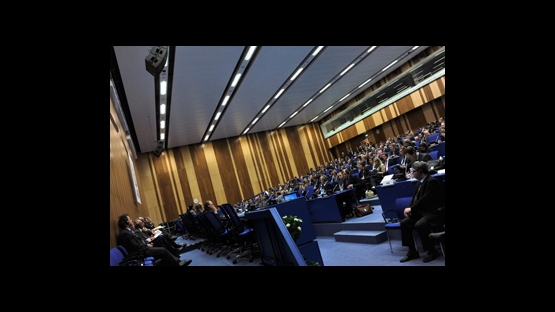Continuing to strengthen nuclear safety and to facilitate the application of safety standards across the world are core goals of the IAEA in its safety standards programme for the peaceful applications of nuclear energy.
Twice a year, the IAEA Commission on Safety Standards (CSS) meets to approve proposals for safety standards as well as to endorse finalized draft standards for approval by the IAEA Board of Governors.
The CSS is a standing body that provides advice to the Director General on the IAEA safety programme and oversees four safety standards committees that focus on reviewing draft safety standards in key areas: nuclear safety, radiation safety, safety in the transport of radioactive material and waste safety. The CSS and each committee comprises nominated experts and officials from Member States and representatives from other international organizations. At each CSS meeting, the four safety committees provide overviews of their work, and Member States share experiences in using the IAEA safety standards and performing other regulatory activities.
Developing safety standards is based on pooling expert knowledge and experience from organizations and IAEA Member States. An international consensus is formed on which safety standards to develop and when. Such a consensus serves not only to identify common safety concerns, but also helps to give Member States an agreed basis for the harmonized application of safety standards worldwide. This process depends on the IAEA's on-going work for international collaboration in establishing "standards of safety for protection of health and minimization of danger to life and property."
Overall, developing a safety standard can take up to five years from initial proposal to final endorsement by the CSS. It is a lengthy process intended to ensure quality, consistency and consensus.
"The work and achievements of the Commission are vitally important for continuous improvements in the Global Nuclear Safety and Security framework, which, in turn, supports international efforts aimed at ensuring high levels of safety in countries with mature nuclear programmes and in those considering or embarking on new nuclear energy programmes," says IAEA Deputy Director General, Denis Flory, in his opening remarks at the 35th CSS meeting.
The 35th CSS meeting held on 4 to 8 April 2014 in Vienna covered a range of safety-related topics. Eleven proposals were submitted on matters that included nuclear power plant design, radiation safety as well as regulations for the safe transport of radioactive material. Meeting sessions also addressed progress on a new IT system for enhancing the review and revision process for safety standards and for maintaining their consistency, the review and revision of safety requirements in light of the Fukushima Daiichi Nuclear Power Plant accident, as well as guidance on how to address safety-security interfaces. In addition, the Russian Federation, the United Kingdom, Canada and Spain presented how they effectively use IAEA Safety Standards in their respective countries.
Background
Since the IAEA safety standards programme began in 1958, the IAEA has developed nearly 400 publications covering a series of principles, requirements and recommendations for ensuring safety in the operation of facilities and the conduct of activities involving nuclear material, radioactive material and radiation. The IAEA safety standards on nuclear, radiation, transport and waste safety are adopted or adapted into or referenced in national regulations by many Member States. Other Member States use the standards in developing, benchmarking or reviewing national regulations.


